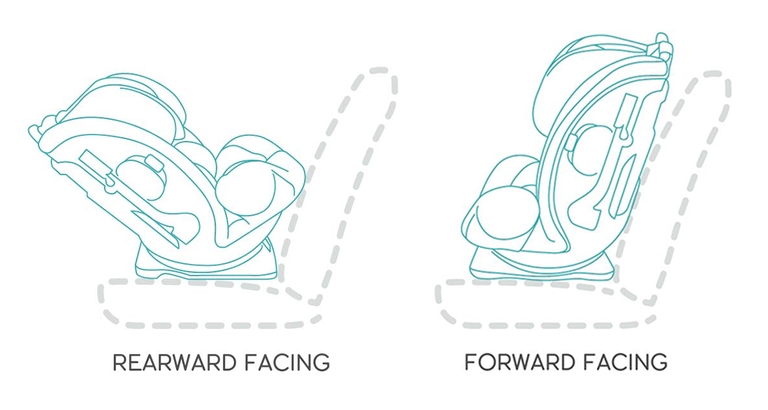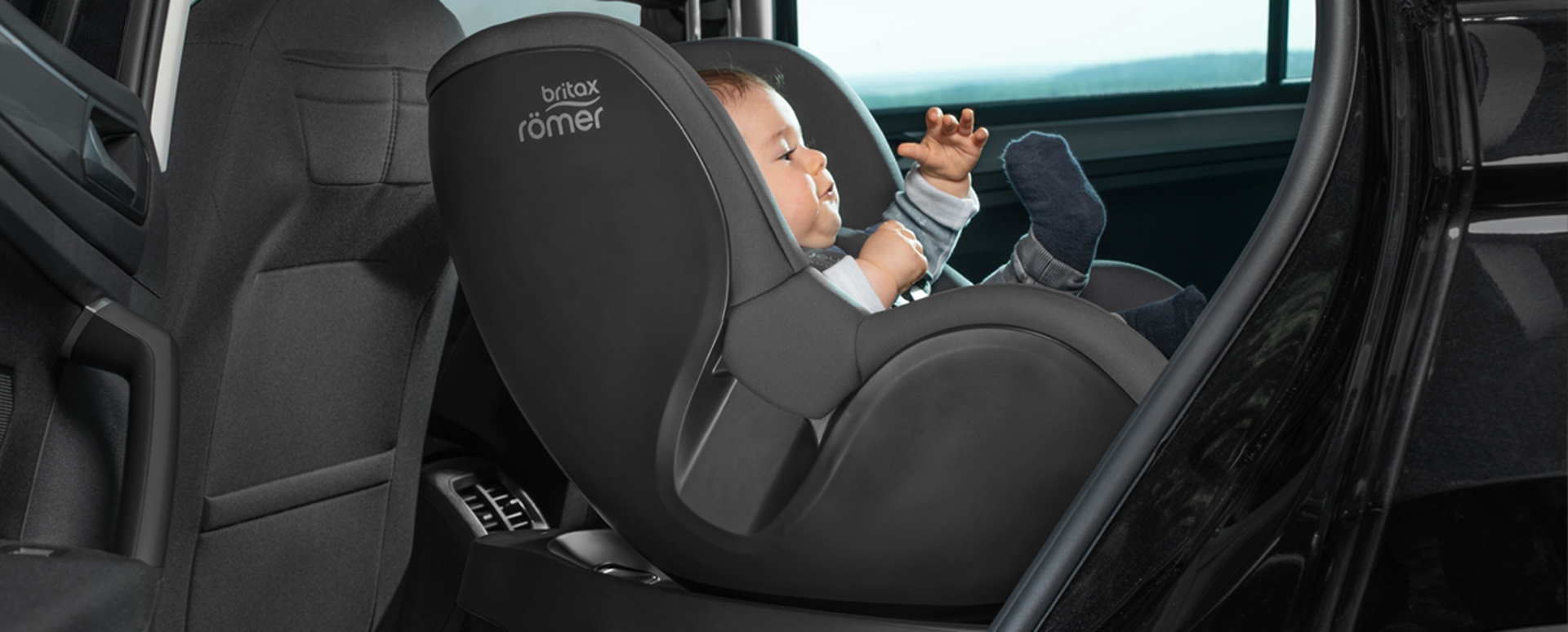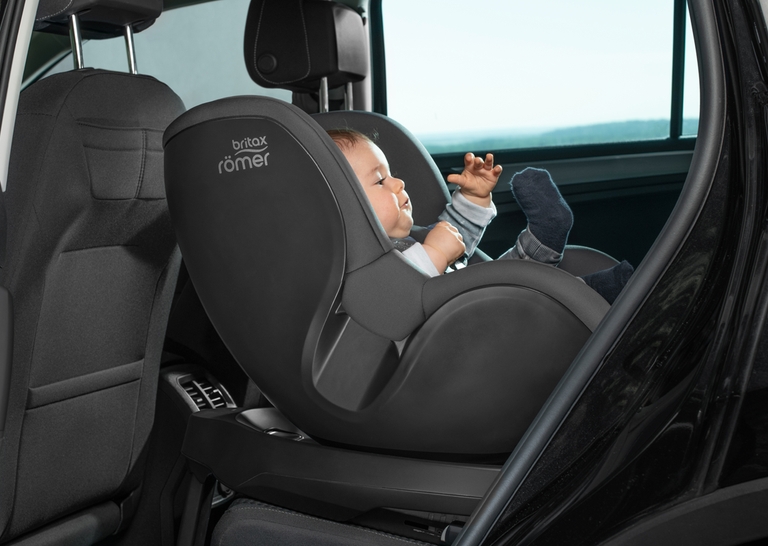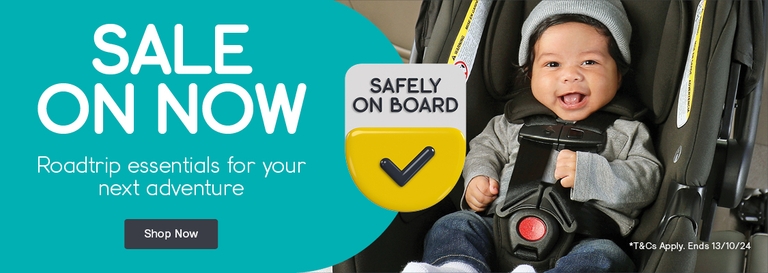Everything you need to know about convertible car seats

Car seat type: Convertible Car Seat (rear-facing, converts to forward-facing). Age range: 0-toddler/early-school age*
*This age range is a guide only. Your child may fit a seat for a longer or shorter amount of time depending on their height and weight.
What's included in this guide:
- Benefits and drawbacks of purchasing a convertible car seat
- How to know when to turn your child from rear-facing to forward-facing
- Features to look for when choosing a seat
- Information on second-hand convertible seats
What is a convertible car seat?
A convertible car seat may fit children from birth through to toddler or early school age – this depends on your child’s individual growth rate. Their name comes from the fact that they ‘convert’ from rear-facing to forward-facing, making them a versatile option as your child grows. Unlike baby capsules, a convertible car seat stays in your vehicle, and you harness your child in and take them out each time you enter and exit the car.
Is it worth buying a convertible car seat?
Like any baby product purchase, this decision lies with you and your family! Here are some pros and cons to help you decide.
What are the benefits of using a convertible car seat?
There are some benefits that a convertible seat offers:
- Convertible car seats last a number of years, making them a cost-effective option for families who don’t want to purchase a replacement seat in their child’s first few years.
- Purchasing a convertible seat with extended rear-facing limits enables you to keep your child in this position for longer, before converting the seat to forward-facing.
Are there any drawbacks to using a convertible car seat?
Unlike a baby capsule, these seats stay entirely in your vehicle, meaning you need to remove your baby from the car seat when you reach your destination rather than carry them within their seat as you can with a baby capsule.
How do you know when to turn your baby from rear-facing to forward-facing in a convertible car seat?
Car safety experts recommend leaving your child rear-facing for as long as possible as it’s the safest way for your little one to travel. Ideally you will keep your child rear-facing until they have outgrown the rear-facing limits of their car seat – this could be 4 years old, or older. But if your child outgrows these limits before two years old, it is safest to find an alternative seat that allows them to rear-face for longer than this.
What features to look for when choosing a convertible car seat
When shopping for a convertible car seat for your baby or toddler, there are some things to keep in mind as you explore your options. Some baby car seats have extra features for either safety or convenience. Here are some to look out for:
Side impact protection
Many convertible car seats offer side impact protection in case of accidents involving a side impact to your vehicle. Unlike front-on accidents, with a side impact there is very little between your child and the outside world to absorb the force. By offering extra layers of cushioning to either the head region, the torso region, or both, side impact protection can help protect your child in an accident.
Easy Adjust Harness
As your child grows, the height of the harness needs to change to ensure it will secure your child safely. In the past, to change the harness height, you would need to uninstall your car seat, unthread and rethread the harness to the new height, put the height of the headrest up separately, and then reinstall your car seat.
While some car seats still use this method, others offer an easy adjust harness, where your headrest and harness can be lifted to the next level using an in-built mechanism. Because you aren’t uninstalling it every time, and the headrest height is automatically at the right level according to your child’s height, this feature reduces the risk of human error, making it handy for both convenience and safety.
ISOFIX
ISOFIX is a car seat installation system that involves connecting the car seat to anchorage points fitted into vehicle seats at the time of manufacture. Some car seats can be installed only using the traditional seat belt to secure it into the vehicle, but some offer ISOFIX as an alternative. And, in some cases, ISOFIX is the only installation method. It’s useful to check whether your car has ISOFIX before you look for a car seat, and always check whether the car seat you choose can be installed using the vehicle belt, ISOFIX or either. The benefit of ISOFIX is it can be a little easier to install correctly, though both installation options are safe when done properly. There are other factors to consider when buying or installing a child restraint with ISOFIX such as the system’s weight limit. Ensure you have read and understood your car seat’s instruction manual thoroughly before using this system, or have one of our experienced child restraint technicians advise you.
Note: if you are using ISOFIX to install the seat into your vehicle, you shouldn’t also use the seat belt. It’s one or the other, never both.
Depth of the car seat when rear-facing
This will be important if you have a car with less internal space. When you install a rear-facing car seat, it is likely to push your front seat forward, impacting the legroom in the front. Some convertible car seats are more compact than others, so if you need a convertible car seat for a small car that will reduce the impact on the front seat, it can be a useful exercise to visit our store and check rear-facing convertible seats for fit in your vehicle before making a purchase.
Tether strap
Convertible car seats can come with or without a top tether strap. The tether strap is an extra point at which the car seat is secured into the vehicle. Whether it’s necessary for you to use this or not will be explained in the car seat’s instruction manual. Make sure you follow these instructions and if it states you must use the tether, then this is a legal requirement, and you will need to be sure you have an anchor bolt in your vehicle to attach the tether to.
Should I purchase a second-hand convertible car seat?
While we understand that it may not be an option for every family, if possible, we recommend avoiding the purchase of a second-hand car seat. These car seats may have faults not visible to the eye due to prior impacts, incorrect maintenance and washing, or poor storage between uses.
If using a second-hand seat is right for your family, it’s worth asking a few key questions before installing and using it for your child:
- Do you know the full history? Has the seat been involved in an accident or stored for a length of time?
- Has the seat been visibly damaged or modified in anyway?
- Is the child restraint in line with current manufacturing standards, or does it conform to previous versions of the standard?
- Is the child car seat complete with all components in place?
If in doubt about any of the above points, it might be time to hunt for an alternative seat.
Would you like more information on choosing the right car seat for your child? Make sure you call or visit our experienced team in store.
Alternatively, you can view our range of convertible baby car seats on our dedicated convertible car seats page.






